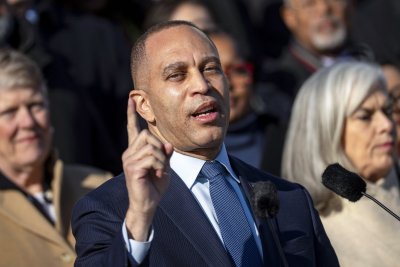NEW YORK — For one Wisconsin couple, the loss of government-sponsored health subsidies next year means choosing a lower-quality insurance plan with a higher deductible. For a Michigan family, it means going without insurance altogether.
For a single mom in Nevada, the spiking costs mean fewer Christmas gifts this year. She is stretching her budget already while she waits to see if the Republican-led Congress will act.
Less than three weeks remain until the expiration of COVID-era enhanced tax credits that have helped millions of Americans pay their monthly fees for Affordable Care Act coverage for the last four years.
The Senate on Thursday rejected two proposals to address the problem, and an emerging healthcare package from House Republicans does not include an extension, all but guaranteeing that many Americans will see much higher insurance costs in 2026.
Here are a few of their stories.
Spending more for less
Chad Bruns comes from a family of savers. That came in handy when the 58-year-old military veteran had to leave his firefighting career early because of arm and back injuries incurred on the job.
He and his wife, Kelley, 60, both retirees, cut their own firewood to reduce their electricity costs in their home in Sawyer County, Wis. They rarely eat out and say they buy groceries only when they are on sale.
But to the extent that they have always been frugal, they will be forced to be even more so now, Bruns said. That is because their coverage under the health law enacted under former President Obama is, because of congressional inaction, getting more expensive — and for worse coverage.
This year, the Brunses were paying $2 per month for a top-tier gold-level plan with less than a $4,000 deductible. Their income was low enough to help them qualify for a lot of financial assistance.
But in 2026, that same plan is rising to an unattainable $1,600 per month, forcing them to downgrade to a bronze plan with a $15,000 deductible.
Kelley Bruns said she is concerned that if something happens to their health in the next year, they could go bankrupt. While their monthly fees are low at about $25, their new out-of-pocket maximum at $21,000 amounts to nearly half their joint income.
“We have to pray that we don’t have to have surgery or don’t have to have some medical procedure done that we’re not aware of,” she said. “It would be very devastating.”
Forgoing insurance
Dave Roof’s family of four has been on ACA insurance since the program started in 2014. Back then, the accessibility of insurance on the marketplace helped him feel comfortable taking the leap to start a small music production and performance company in his hometown of Grand Blanc, Mich. His wife, Kristin, is also self-employed as a top seller on Etsy.
Their coverage has worked for them so far, even when emergencies come up, such as an ATV accident their 21-year-old daughter had last year.
But now, with the expiration of Obamacare subsidies that kept their premiums down, the 53-year-old Roof said their $500-per-month insurance plan is jumping to at least $700 a month, along with spiking deductibles and out-of-pocket costs.
With their joint income of about $75,000 a year, that increase is not manageable, he said. So, they are planning to go without health insurance next year, paying cash for prescriptions, checkups and anything else that arises.
Roof said his family is already living cheaply and has not taken a vacation together since 2021. As it is, they do not save money or add it to their retirement accounts. So even though forgoing insurance is stressful, it is what they must do.
“The fear and anxiety that it’s going to put on my wife and I is really hard to measure,” Roof said. “But we can’t pay for what we can’t pay for.”
Single mom’s straining budget
If you ask Katelin Provost, the American middle class has gone from experiencing a squeeze to a “full suffocation.”
The 37-year-old social worker in Henderson, Nev., counts herself in that category. As a single mom, she already keeps a tight budget to cover housing, groceries and daycare for her 4-year-old daughter.
Next year, that is going to be even tougher.
The monthly fee on her plan is going up from $85 to nearly $750. She decided she is going to pay that higher cost for January and reevaluate afterward, depending on whether lawmakers extend the subsidies, which as of now appears unlikely. She hopes they will.
If Congress does not act, she will drop herself off the health insurance and keep it only for her daughter because she cannot afford the higher fee for the two of them over the long term.
The strain of one month alone is enough to have an impact.
“I’m going to have to reprioritize the next couple of months to rebalance that budget,” Provost said. “Christmas will be much smaller.”
Swenson writes for the Associated Press.






